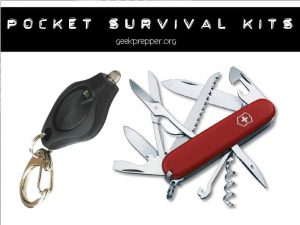
When I first became interested in survival, I started doing research.
I read all kinds of articles and books on survival.
Naturally, one of my first instincts was to start purchasing survival gear.
I kept hearing about bug out bags and how important they were.
I immediately started gearing up to build a quality bug out bag. I wanted to be sure that I was ready to hit the woods when SHTF.
Quick Navigation
However, there are two primary misconceptions with this approach. The first is that a survivalist’s priority should be collecting gear for a bug out bag.
Any survivalist should prioritize knowledge and skill over gear. Survival knowledge is often free to learn online.
Survival knowledge cannot be broken or lost as long as you continue to practice. This should always be the most important.
The second misconception is that your most useful kit is a bug out bag. Of course, there are scenarios in which you must leave your home to seek a safer area. However, this should be a last resort. More often your goal will be to get home and protect your family from your home.
This is where a EDC survival kit comes in to play. These kits are small and typically inexpensive. In this article, we will cover the different items you will want in this kit and how to select them.
What is a EDC Survival Kit?
An EDC survival kit, also known as an EDC (Every Day Carry) kit, is a collection of survival gear that you can keep on your person at all times.
It is great to have a stockpile of gear at home, but more often disasters will happen when you are away from home at work or doing something else. It is great to have a get home bag in your car, but you may be trapped in a building and unable to get to your car.
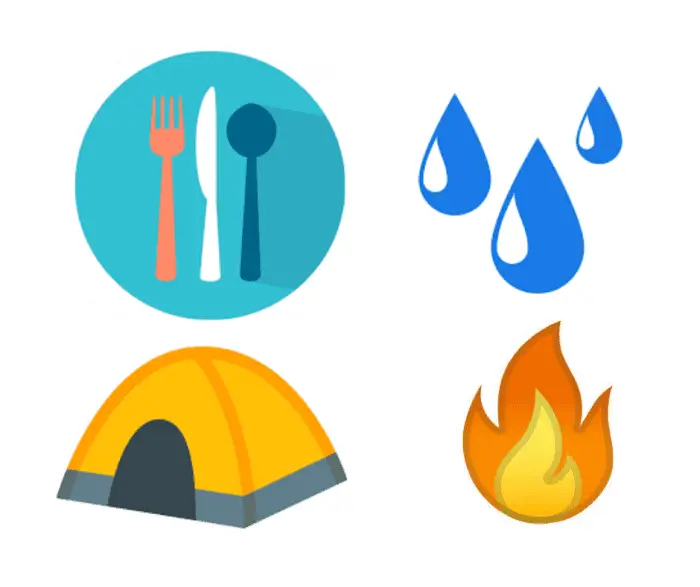
EDC kits are a little different for each person. You must evaluate what you can conceal and what is most important to keep with you.
There are two primary types of gear in an EDC kit. There are items you can conceal, and items that are not concealed but blend into your daily life.
Concealment is much easier if you have a purse or briefcase that you keep with you at all times. However, you must be realistic about these items.
If you go to the bathroom, will you have it with you? Do you take them to lunch? Do you take them to meetings? If the answer is ‘no’, you cannot keep EDC items in a purse or briefcase. In this case, concealed items must be put in your pockets or under your clothing.
You want to focus items in your EDC kit to the four pillars of survival. These are food, water, fire, and shelter. You also want to consider secondary items that could help you safely get to your vehicle or get you home.
These include first aid, self-defense, land navigation, and signaling for help. It is important that you try to include items with multiple uses. This will reduce the amount of gear in your kit.
Knives
Most people consider a good knife to be the most important piece of gear in any survival scenario for a variety of functions including self-defense.
If you spend your days in an environment that allows a large knife in a sheath on your belt, this is the way to go.
You can then select a full tang fixed blade knife that is large enough for chopping and self-defense, but small enough for finer work.
However, in many cases carrying a knife like this is either illegal or against company policy. In this case, you have a few other options.
If you choose to go with a folding blade knife to keep in your pocket, you must be very selective. Folding blade knives are not as reliable.
The safety can fail or the primary joint can come loose. For concealed blades, you can also go with a push knife around your neck or a boot knife.
If you wear boots daily, hiding a good-sized full tang fixed blade knife can be easy. You simply strap the sheath inside the ankle of your boot. A push knife is primarily used for self-defense and can be worn around your neck and under your shirt.
You may want to consider carrying more than one of these options. Often, I carry a folding blade knife in my pocket, a credit card knife in my wallet, and a push knife in my wallet.
You can often find credit card sized tools to put in your wallet with multiple functions. Whatever knife you choose, be sure the steel is high quality and the blade is kept sharp.
Cordage
Quality cordage is often considered the second most important survival tool because of it’s multiple uses. I try to use 550 paracord as often as possible.
The cordage is thin and easy to conceal but is also strong enough to resist 550 lbs. of weight. It has multiple interior strands so you can split it open and use those separately.
There are several different ways to conceal cordage. There are woven lanyards that you can attach to your belt, to your keys, or to a water bottle.
I have a couple survival bracelets that have woven paracord as well as a whistle, a compass, and a ferro rod for starting fire. I often wear these around my ankle and under my socks. Several of my pairs of boots have had the laces replaced with 550 paracord.
In fact, you can buy survival paracord that has additional strands inside including trapping wire, fishing line, and a flammable strand for starting fire. If you choose the right color, most people will never notice all of this extra cordage.
Fire Starters
Starting fire is often one of your biggest priorities in a survival situation. There are several items you can keep with you for this purpose. Lighters are the easiest option.
It is still considered normal for people to carry lighters in their pockets for smoking. If you are going to go with a lighter, select a Zippo or a standard Bic lighter. Zippos are windproof, reliable, and can be refilled with any flammable liquid. Bics are cheap and reliable.
Ferro rods are also a good idea. I have a credit card tool with a ferro rod, a survival bracelet with a ferro rod, and also one that I wear around my neck. Ferro rods are waterproof and require no fuel, so they are often considered the most reliable option.
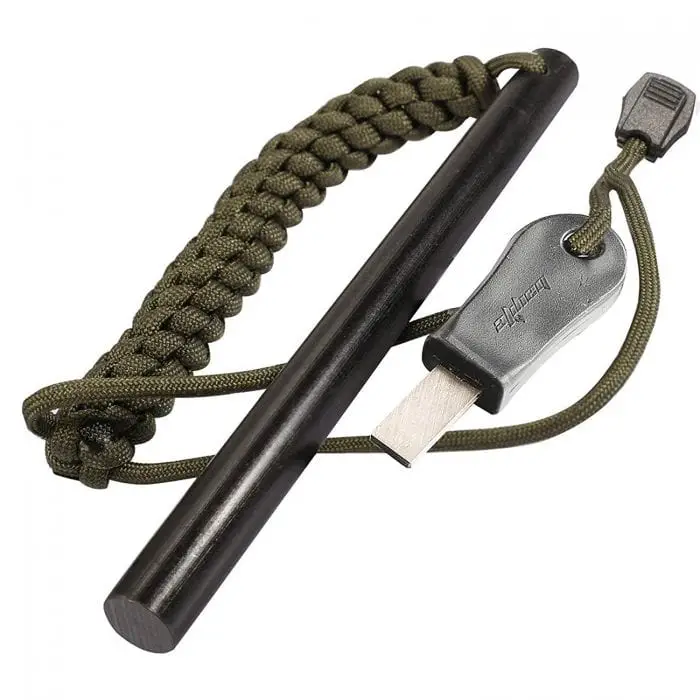
Finally, it is smart to carry tinder with you. You can put together a kit in a mint tin for concealment.
This might have cotton balls dipped in petroleum jelly or maybe char cloth that you made previously. You might have some waterproof matches just in case you need them.
I personally like to carry Wetfire cubes. They come in small, individually wrapped packets that look like mints or candy. However, you can shave a little off and give it a spark from your Ferro rod to start a fire in rainy or windy conditions.
Firemaking:
- Fresnel Lens This will fit in your wallet, it’s thinner than a credit card. I keep them in my car, my bug out bag, and my get home bag. I found a 10 pack at Amazon for low price.
- Cigarette Lighter – I use Bic, I think they feel sturdier and don’t tend to leak like the cheapos. Use whatever you have or whatever you prefer.
- Firesteel – The Exotac nanoSTRIKER is designed to be keyring sized, but there are many mini-firesteel products out there.
- Blastmatch -The Blastmatch is compact and should fit nicely on your keychain or in a pocket.
Multi-Tools & Misc Gear
There are several other survival items I like to carry with me in case I need them.
As stated before, wallet tools are great to cover a variety of needs. I have two flashlights, a lock pick set, a ferro rod, a push knife, a multi tool, a fishing kit, a signal mirror, and a folding blade knife all hidden in my wallet. If you don’t go this route, you will want to put a small flashlight on your key ring or in your pocket.
Multitools are often kept in a sheath on a belt. I try to always keep a snack of some kind in my pocket for survival food. I also like having wire for trapping and some sort of fishing kit. This could be put together in a small mint tin and kept in your pocket.
Recommended Multi-tools:
- Utili-key XT 8-In-1. This tiny, key-sized tool provideds a Flat Screwdriver, Phillips Screwdriver, Micro-Sized Screwdriver, Nail File, Nail Cleaner, Wire Cutter, Wire Stripper and Bottle Opener.
- Gerber Shard – small and medium flat driver; Philips head driver, wire stripper, pry bar, bottle opener, lanyard hole
- Swiss+Tech Micro Slim 9-in-1 Key Ring Tool Kit – wrench, 3 screwdrivers, 2 knife blades, flat wrench, bottle opener and nail fil
- Leatherman Squirt – 420 HC clip-point knife blade, Needlenose pliers, regular pliers, wire cutters, Spring-action scissors, wood/metal file, bottle opener, Flat/Phillips medium regular screwdriver (length 2.25 inches)
- Leatherman Juice – pliers, wire cutters, 4 screwdrivers, can and bottle opener, lanyard attachment, and spring-action scissors (length 3.2 inches)
- Leatherman Style CS – 420HC clip-point knife blade, carabiner/bottle opener, spring-action scissors, nail file, tweezers, flat/Phillips screwdriver
- Leatherman Style PS – TSA-Compliant Design, Spring-action Regular Pliers, Spring-action Needlenose Pliers, Spring-action Wire Cutters, scissors, Flat/Phillips Screwdriver, Nail File, Tweezers, Carabineer/Bottle Opener (This is the one you want for Air Travel, no Knife!)
For water purification, I always keep Iodine Tablets. The vial easily fits in my pocket. I also carry a filter water bottle which can be left out in the open.
It looks just like any other water bottle. For shelter, cordage always helps. In addition, I like to carry a disposable emergency blanket in my pocket.
With this you can wrap up or build an actual shelter. I typically don’t keep a full first aid kit, but I do like to keep some sort of bandage for large wounds.
A handkerchief can work fine for this. You always want a compass for navigation, and several of my pocket tools have one built in. You can signal for help with the emergency blanket or keep a signal mirror in your wallet.
Finally, for self-defense you already have your knife. However, I also like to keep a Tactical Pen with me.
It looks just like a normal pen, but is perfect for self defense and has a flashlight and a multitool built in. If you have a conceal and carry permit for a handgun and it is allowed where you work, you may want to consider a handgun for self-defense.
Recommended Pocket Flashlights:
LED Flashlights have come a long way and now are capable of producing quite a bright light with very low energy draw. These flashlights can last for years if only used occasionally. If used continually some of them can run beyond 40 hours.
- LRI PWK Photon II LED Keychain Micro-Light, White Beam) with an additional locking switch, for hands free or continual use.
- INOVA Microlight STS Flashlight – “Swipe-To-Shine”; 4 Functions – High Power (16 Lumen), Variable Dim, Low Power (2 Lumen) & Strobe
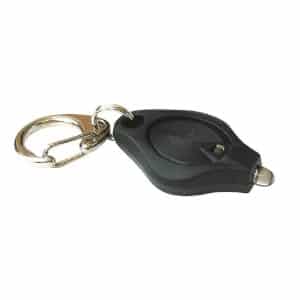
Pocket sized flashlights:
- Fenix Compact 140 Lumen Flashlight
- 4Sevens Mini CR2 180 Lumen Flashlight.
As you can see, you can carry a complete survival kit hidden on your person at any given time. However, you must be strategic about these items. Take the time to do your research.
Just because it is small and can be concealed does not mean it will hold up when SHTF. If you find quality items that can be hidden on your person or hidden in plain sight, it could end up saving your life.
The purpose of this EDC Survival Kit is to provide a core set of tools, that can instantly move from scenario to scenario, giving us a modular approach to our separate survival kits.
My EDC Survival Kit
Every EDC survival kit is based on individual needs and preferences that depend on what type of survival situation or emergency you are most likely to encounter on a daily basis.
Therefore, I figured showing you what my specific EDC kit looks like to help you generate more ideas. Personally, I am tired of spending money.
I know we need duplicates and backups of our key items, but putting that aside, I wanted to put together a core kit, that I could take from my commuter backpack, slide it into my Get Home Bag or my Airline Travel Get Home Kit and together I’ll have all the tools I need, for the purpose at hand.
The Organizer
I decided to build this core set off a small bag, with a ton of options, the Maxpedition EDC Pocket Organizer. I tried the Condor Pocket Pouch, which is a great bag, but didn’t offer as many tool holders or pockets for my kit. It may work fine for you.
The Tools and Gear
- Notebook
- EMT Shears
- Hand Sanitizer (bought this so I could refill the spray bottle with Insect Repellent)
- Pocket Screwdriver with extra bits
- Fenix E01 Flashlight – 13 Lumen, 21 hour run time using just one 1.5V AAA battery (battery included)
- Ball point pen
- Magnifying glass (came with #9, the Tick Remover)
- Signal Mirror (Dog Tag style)
- Pro-Tick Remedy (Tick Remover)
- Doc Allen’s VersaTool
- Duct Tape and Fishing line wrapped around a cut down gift card.
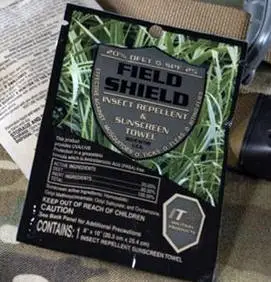 Flat 6″ Ruler
Flat 6″ Ruler- Doc Allen’s VersaTool’s bits
- PocketWrench II
- Marine Whistle
- PROKNOT Outdoor Knot Cards
Not Shown in the photos
- Field and Shield Insect Repellent & Sunscreen Towel
- Paracord
- Mini Firesteel
- Bic Lighter Mini
- Compact Compass
- Water Purification Tablets
- First Aid Supplies (bandages, pain relievers, cough drop, etc)
- Gallon Zip Lock bag (Carry/purify Water, or other uses)
You probably noticed that there isn’t a knife in this kit. I already EDC a Swiss Army Knife Trekker and a Becker BK11 Neck Knife to compensate, if you don’t EDC a knife, you should adjust your EDC kit accordingly.
I could probably squeeze in a Multitool and a SAS Survival Guide Pocket edition, but I just leave both of those in my computer backpack, that I use for work, and carry on when I fly.
If I need to use my Get Home bag, I slide this pouch or tools out of my Computer backpack and into my Get Home Bag, adding it’s tool set to my repertoire of gear.
With this modular setup, I can use these core tools I have an EDC survival kit, that will help me get home or survive, even if I can’t get to my car to grab my Get Home Bag or any other gear.

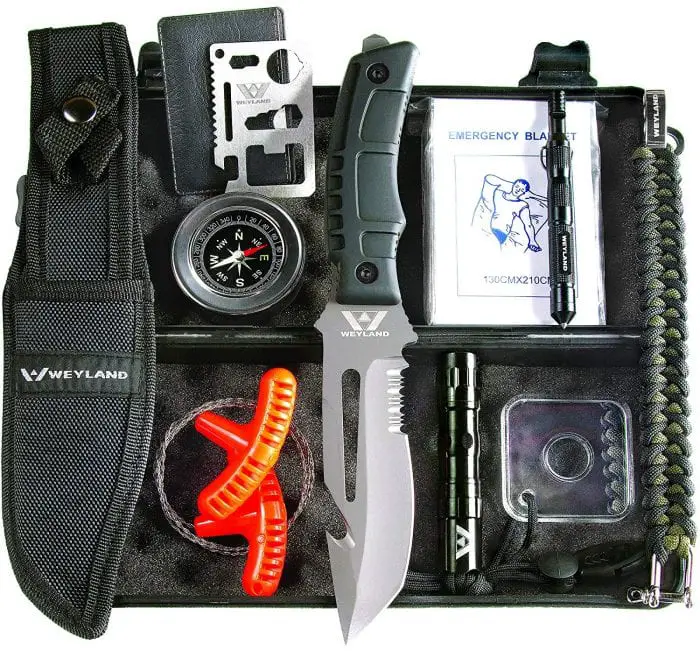
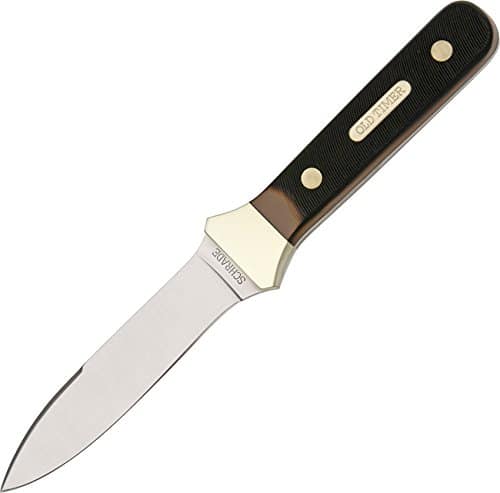

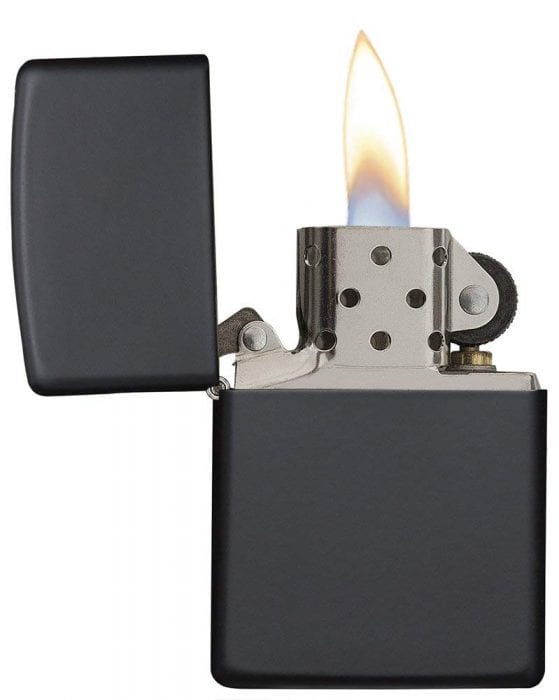
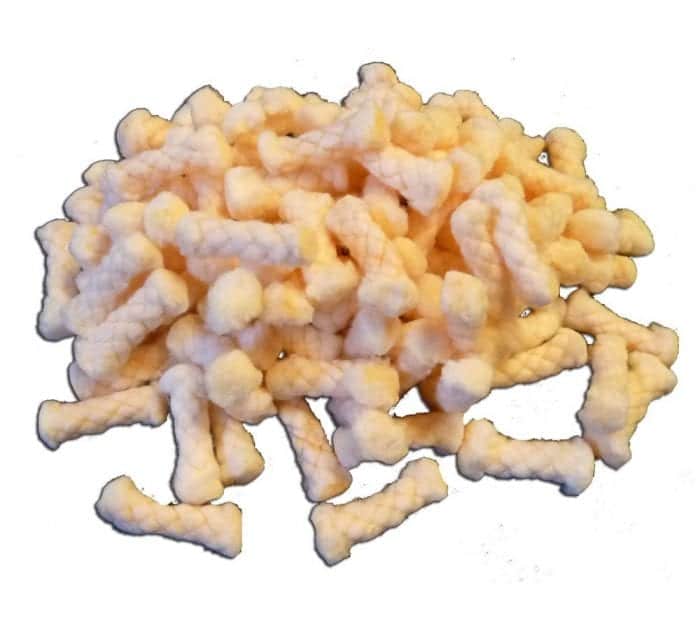



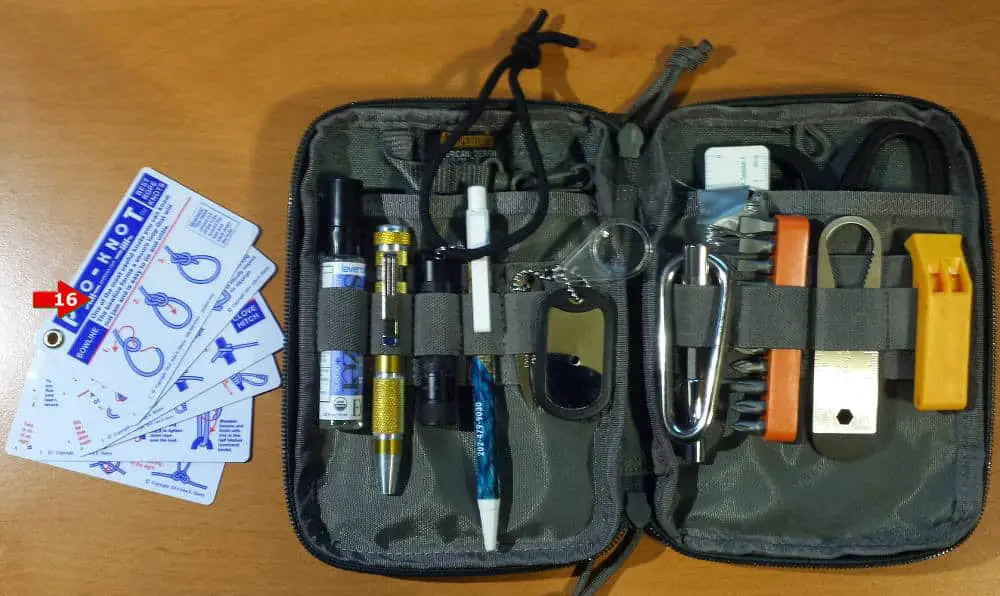


I love your EDC Kit. Too many kits seem to end up as Rambo fantasies instead of something that will actually get some use.
Why would you want 2 different screwdrivers? #4 and #10 seem to both fill the same roll.
Purely from an EDC perspective, I’ve run into multiple situations where more than one screwdriver would be handy. Or, more often, I use a multitool as both a screwdriver and pliers, and I end up needing both at the same time.
Buen artículo, me ayudó mucho.
Gracias.